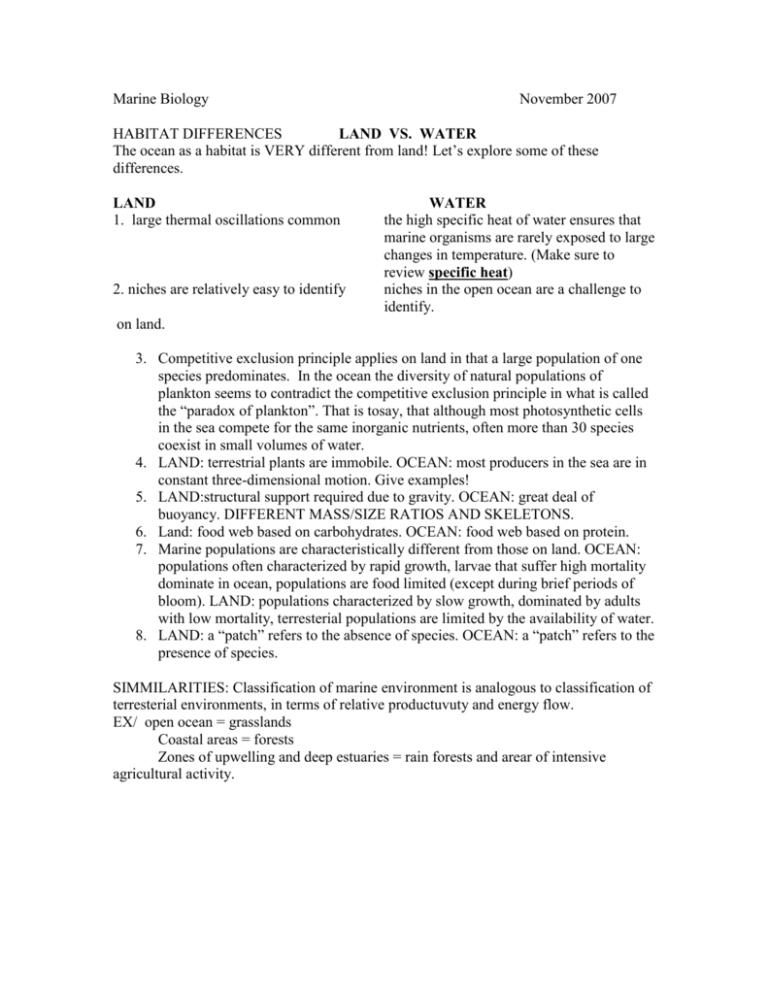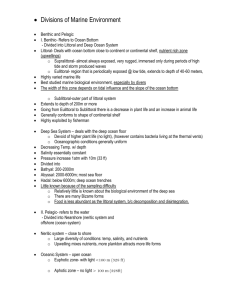Land vs. Ocean
advertisement

Marine Biology November 2007 HABITAT DIFFERENCES LAND VS. WATER The ocean as a habitat is VERY different from land! Let’s explore some of these differences. LAND 1. large thermal oscillations common 2. niches are relatively easy to identify WATER the high specific heat of water ensures that marine organisms are rarely exposed to large changes in temperature. (Make sure to review specific heat) niches in the open ocean are a challenge to identify. on land. 3. Competitive exclusion principle applies on land in that a large population of one species predominates. In the ocean the diversity of natural populations of plankton seems to contradict the competitive exclusion principle in what is called the “paradox of plankton”. That is tosay, that although most photosynthetic cells in the sea compete for the same inorganic nutrients, often more than 30 species coexist in small volumes of water. 4. LAND: terrestrial plants are immobile. OCEAN: most producers in the sea are in constant three-dimensional motion. Give examples! 5. LAND:structural support required due to gravity. OCEAN: great deal of buoyancy. DIFFERENT MASS/SIZE RATIOS AND SKELETONS. 6. Land: food web based on carbohydrates. OCEAN: food web based on protein. 7. Marine populations are characteristically different from those on land. OCEAN: populations often characterized by rapid growth, larvae that suffer high mortality dominate in ocean, populations are food limited (except during brief periods of bloom). LAND: populations characterized by slow growth, dominated by adults with low mortality, terresterial populations are limited by the availability of water. 8. LAND: a “patch” refers to the absence of species. OCEAN: a “patch” refers to the presence of species. SIMMILARITIES: Classification of marine environment is analogous to classification of terresterial environments, in terms of relative productuvuty and energy flow. EX/ open ocean = grasslands Coastal areas = forests Zones of upwelling and deep estuaries = rain forests and arear of intensive agricultural activity.








